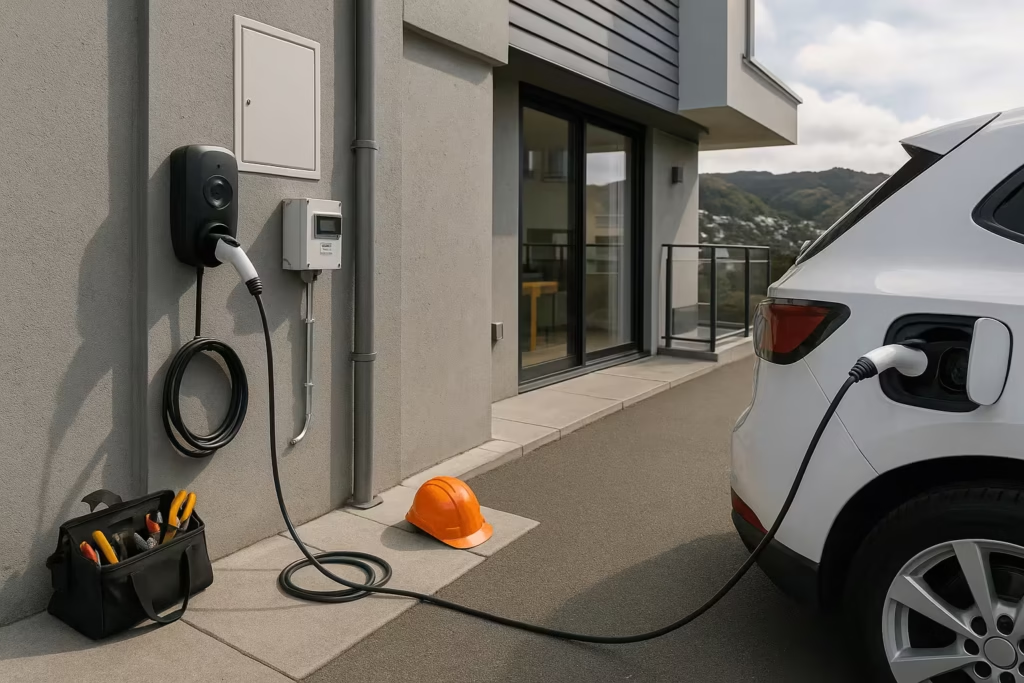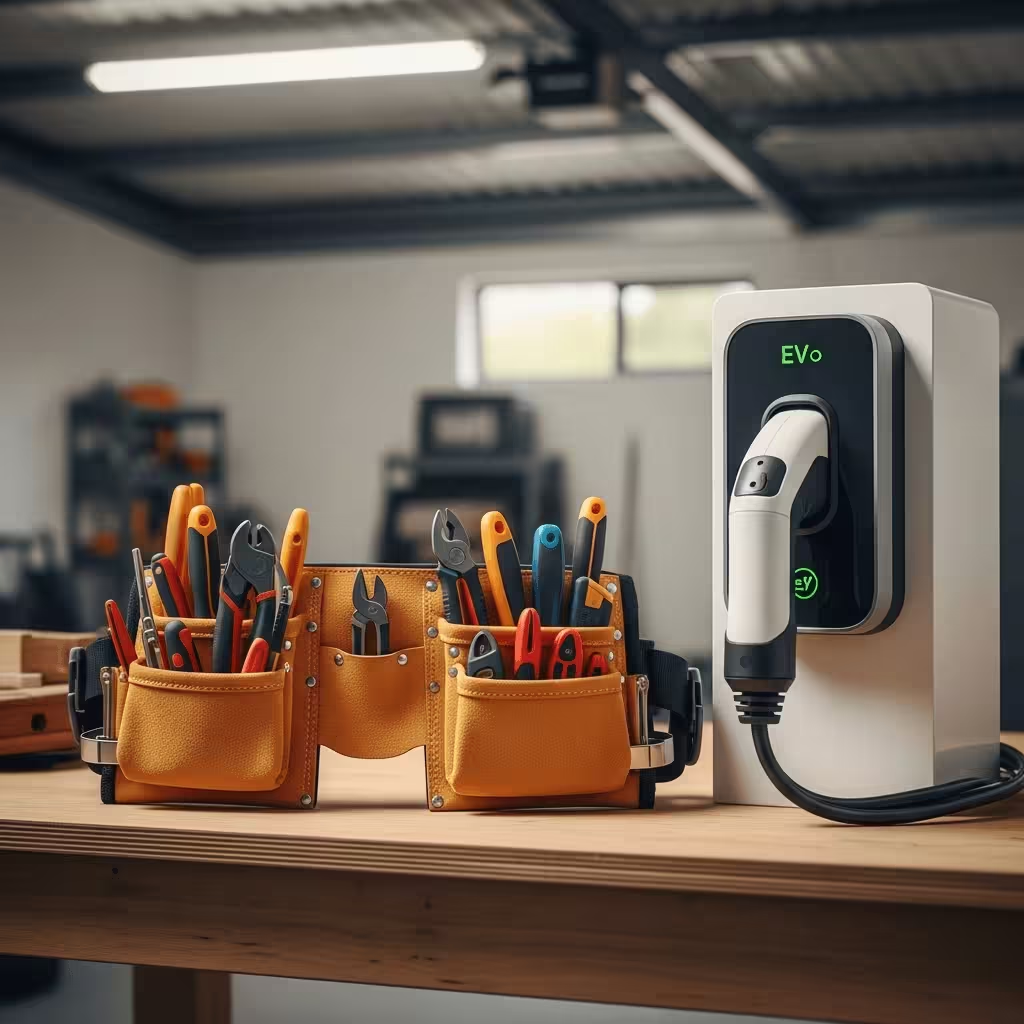How do RCD circuit breakers work? They monitor your electrical circuits and instantly cut off power to prevent shock or fire when an imbalance is detected. This advanced safety mechanism is vital in safeguarding homes and businesses against electrical hazards efficiently.
- Introduction
- Components and Operation of RCDs
- Practical Uses and Benefits of RCDs
- Why Choose Weka Electrical for How Do RCD Circuit Breakers Work
- Frequently Asked Questions
- How do RCD circuit breakers work?
- What is the difference between an RCD and a circuit breaker?
- How often should an RCD be tested?
- Can I install an RCD myself?
- Are RCDs mandatory in New Zealand homes?
- What should I do if my RCD keeps tripping?
- How does an RCD increase safety in the home?
- Why choose Weka Electrical for RCD installations in Wellington?
Welcome to our comprehensive guide on “How Do RCD Circuit Breakers Work? Understanding Electrical Safety.” Whether you’re a homeowner or a professional in the electrical industry, understanding the intricacies of Residual Current Devices (RCDs) is essential for ensuring electrical safety. Weka Electrical, based in Wellington, New Zealand, brings you this detailed exploration into the functioning and importance of RCDs.
How RCD Breakers Protect You
Residual Current Devices, commonly known as RCDs, are designed to prevent electric shocks and electrical fires by monitoring the flow of electricity through a circuit. In the event of a fault, such as a live wire coming into contact with a metal appliance, RCDs quickly cut off the electricity supply to prevent harm.
Detecting Imbalances
The primary function of an RCD is to detect imbalances in electrical current. Under normal conditions, the current flowing into the system is equal to the current flowing out. When an imbalance occurs, indicating a potential leakage or fault, the RCD interrupts the circuit.
Importance of RCDs in Electrical Safety
RCDs are crucial for both domestic and commercial premises. They offer a crucial layer of protection by significantly reducing the risk of electrical fires caused by faulty wiring or appliances. Their role in safeguarding lives and property cannot be overstated.
In the following sections, we will delve into the components and operation of RCDs, the differences between various types of circuit breakers, and how to ensure your systems are up to date with the latest safety standards.

Components and Operation of RCDs
Residual Current Devices (RCDs) are complex, yet highly effective mechanisms that hold a pivotal role in electrical safety systems. To comprehend how do RCD circuit breakers work, it’s essential to break down their components and understand each element’s contribution to overall functionality. Generally, an RCD comprises a summation current transformer, a relay mechanism, a test button, and a switching mechanism. These components work meticulously to detect residual current and interrupt the circuit swiftly, thereby preventing potential electrical hazards.
Summation Current Transformer
The heart of an RCD lies within its summation current transformer. This component detects any imbalance in electrical current flowing through the circuits. Typically, in a healthy circuit, the incoming and outgoing currents should sum to zero, indicating that current electricity is not leaking to the earth. However, if there is a fault, such as a live wire contacting a conductive surface or human, this results in a difference, making the transformer trigger the alert for disconnection.
Relay Mechanism
Upon detecting an imbalance, the RCD’s relay mechanism is activated. The relay is essentially an electromechanical switch that responds to changes detected by the transformer. Once the relay is actuated, it rapidly initiates the tripping process, which disconnects the electrical supply within 10 to 30 milliseconds. This quick reaction is crucial as it considerably reduces the risk of severe electric shock or fire.
Test Button and Switching Mechanism
One of the most practical features of an RCD is its test button. This button allows for periodic testing of the RCD’s functionality to ensure it operates correctly. When the test button is pressed, it simulates an imbalance, causing the RCD to trip. The switching mechanism of an RCD plays a crucial role in cutting-off the power once an imbalance is detected. This mechanism is designed to safely interrupt the current without causing any additional damage to the overall electrical system.
Understanding these components and their operation gives insight into why RCDs are indispensable for maintaining a safe electrical environment. Emphasising their significance, especially in residential and industrial settings in Wellington, New Zealand, is a focus for Weka Electrical.
In the next section, we will delve into the practical aspects and benefits of using RCDs, highlighting their importance in everyday applications and overall safety enhancements.

Practical Uses and Benefits of RCDs
Following our deep dive into the components and operation of RCDs, it is crucial to explore their practical applications. Recognising their diverse uses aids in understanding why RCDs are indispensable in modern electrical systems.
Real-World Applications
RCD circuit breakers are fundamental in residential, commercial, and industrial settings. In homes, they are often installed in bathrooms and kitchens where water contact is prevalent, increasing the risk of electrical hazards. In commercial spaces, such as offices and retail environments, RCDs protect equipment and personnel from electrical faults that can interrupt business operations. Meanwhile, in industrial sectors, where heavy machinery is in constant use, RCDs provide an essential layer of safety against unexpected circuit imbalances.
In Wellington, New Zealand, where Weka Electrical operates, weather conditions such as high humidity and frequent rainfall can increase the likelihood of electrical faults. Installing RCDs in outdoor areas like gardens or parking zones adds a safeguard against such environmental factors, ensuring public safety and compliance with local electrical standards.
Key Benefits of RCDs
The primary benefit of RCDs is their lightning-fast response to circuit imbalances, significantly reducing the risk of electrical shocks and potential fires. This quick action is critical in protecting both human life and property. Furthermore, RCDs are cost-effective in the long run; while the initial installation might seem expensive, the protection they offer reduces the likelihood of costly repairs and legal liabilities associated with electrical accidents.
Another advantage of RCDs is their contribution to increased efficiency in maintaining electrical systems. By automatically disconnecting faulty circuits, they help pinpoint issues quickly, allowing electricians like those at Weka Electrical to troubleshoot effectively and restore service with minimal downtime.
By embracing these protective devices, homeowners and businesses can meet safety regulations more easily, making spaces not only safer but also more attractive to insurance providers due to lower risk profiles.
Strategic Implementation of RCDs
Implementing RCDs strategically can enhance their effectiveness. Placing them in circuits that supply power to appliances with a higher risk of water exposure, such as dishwashers and washing machines, optimises the circuit protection. Industries and larger facilities can adopt them in critical operational zones where electrical failures could lead to significant production losses or safety hazards.
The correct selection and installation of RCDs requires expertise. Consulting experienced professionals, such as those at Weka Electrical, ensures that the chosen RCDs are appropriate for the specific electrical demands of the location and comply with New Zealand’s safety standards.
Transitioning into the next section, it is evident that entrusting your RCD needs to seasoned professionals can save time, money, and secure peace of mind. The expertise of Weka Electrical in navigating these complexities positions them as a trusted partner for safety solutions.
Why Choose Weka Electrical for How Do RCD Circuit Breakers Work
When it comes to understanding how do RCD circuit breakers work, you want to ensure that you choose a company with the right expertise and a solid reputation. Weka Electrical is a trusted name in Wellington, New Zealand, providing exceptional insight and service in the field of electrical safety.
Experienced Local Experts
With years of experience operating within the local Wellington community, Weka Electrical brings an unmatched level of expertise to the table. Our electricians are not only skilled in their technical capabilities but are also familiar with the unique requirements and regulations of the New Zealand electrical industry. This local expertise ensures we can offer customised solutions that address specific safety concerns related to residential and commercial properties across the region.
Our team continually updates its skills and knowledge base to remain at the forefront of electrical safety advancements. Whether you require consultation or a hands-on solution for understanding and working with RCD circuit breakers, Weka Electrical is well equipped to deliver.
What Sets Us Apart
The distinguishing factor of Weka Electrical lies in our commitment to quality, reliability, and customer satisfaction. We understand that understanding how do RCD circuit breakers work is crucial not just for industry professionals but also for everyday homeowners aiming to enhance their property’s safety standards. That is why we offer comprehensive services that range from thorough explanations and consultations to the installation and maintenance of RCD systems.
We pride ourselves on maintaining a transparent and communicative relationship with our clients, ensuring they are informed and confident in the safety measures implemented by our team. Our track record of satisfied customers is a testament to our dedication to integrity and professionalism.
Choosing Weka Electrical for your electrical needs means choosing peace of mind. We invite you to reach out and explore how we can help you better understand and safely implement RCD circuit breakers.
Frequently Asked Questions
How do RCD circuit breakers work?
An RCD circuit breaker works by detecting the difference between the live and neutral currents in an electric circuit. If an imbalance is detected, the RCD trips the circuit to prevent electric shock.
What is the difference between an RCD and a circuit breaker?
An RCD is designed to prevent electric shocks by monitoring electrical current imbalances, whereas a traditional circuit breaker primarily acts to prevent overload or short circuits.
How often should an RCD be tested?
It is generally recommended to test your RCD every 3 months by pressing the test button. This ensures it is functioning properly and providing safety.
Can I install an RCD myself?
For safety reasons, it is best to have an RCD installed by a qualified electrician. DIY installations can be risky and may not meet safety standards.
Are RCDs mandatory in New Zealand homes?
Yes, RCDs are mandatory for electrical installations in new homes and for substantial renovations in New Zealand to enhance safety.
What should I do if my RCD keeps tripping?
If your RCD continuously trips, it could indicate a persistent fault in the circuit. It is advisable to contact a qualified electrician to diagnose and fix the issue.
How does an RCD increase safety in the home?
An RCD enhances home safety by quickly cutting off electricity in the event of a fault, significantly reducing the risk of fire and electric shock.
Why choose Weka Electrical for RCD installations in Wellington?
Weka Electrical offers expert knowledge, reliable service, and peace of mind when it comes to RCD installations. We are committed to excellent electrical safety standards in Wellington.















